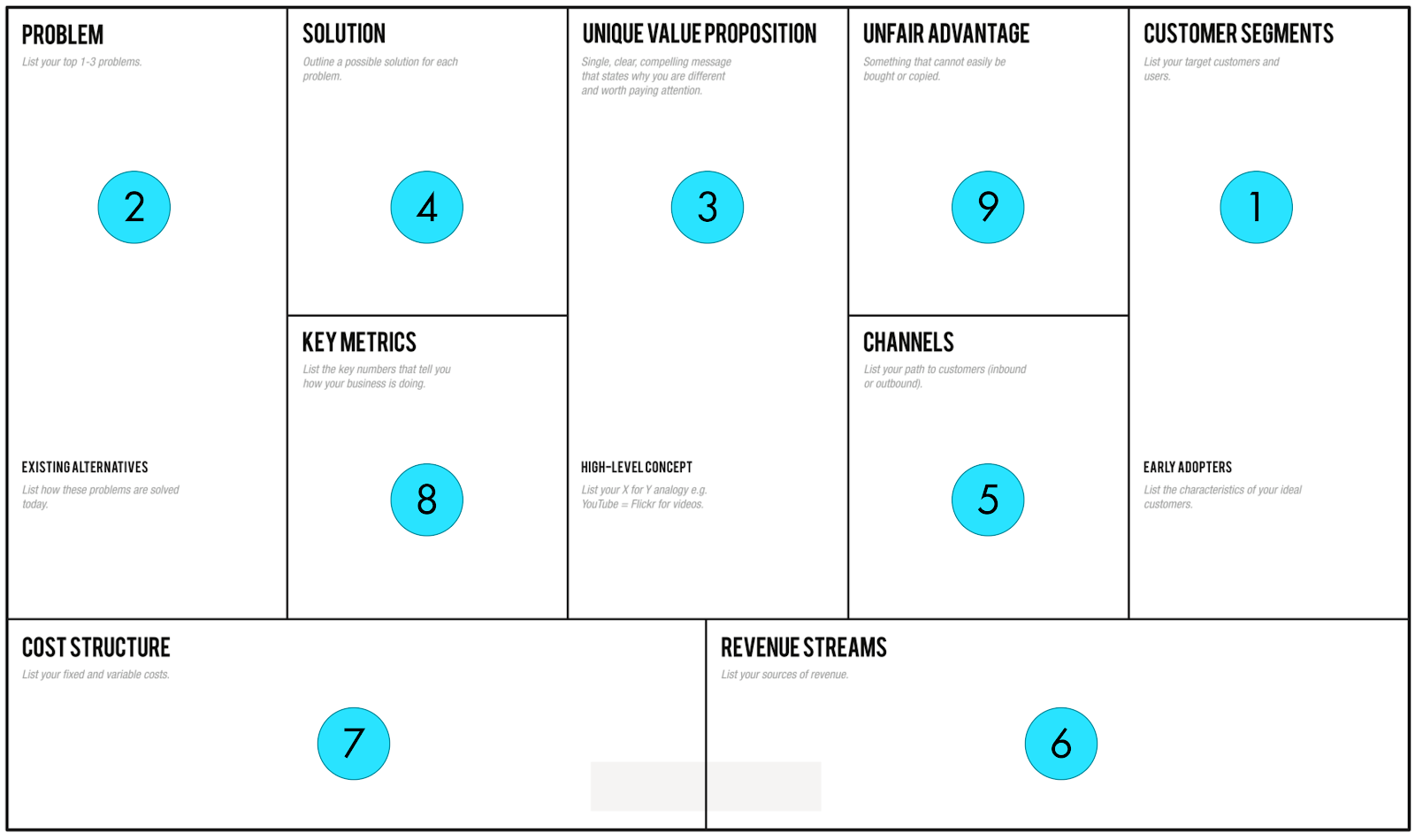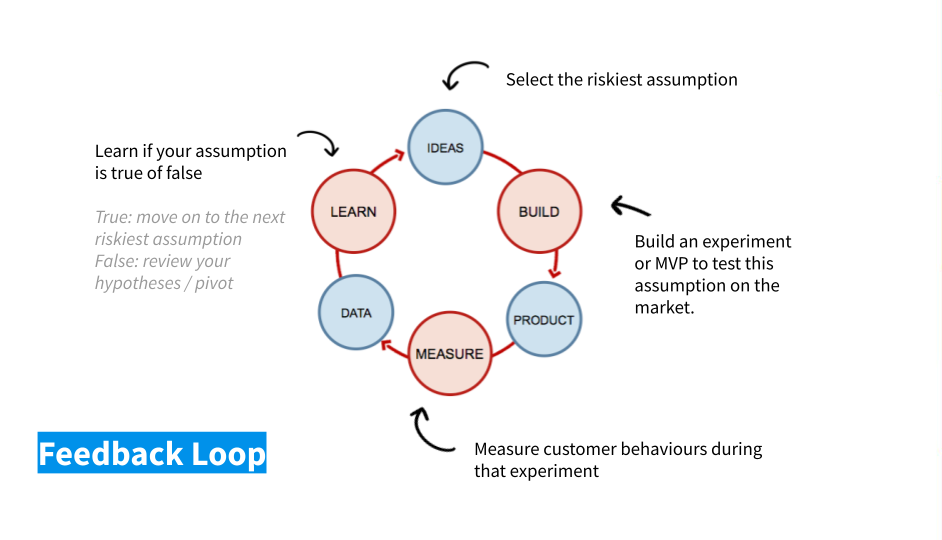Lean Startup Canvas

What is a Lean Startup Canvas?
The Lean Startup Canvas (or Lean Canvas) adapts the Business Model Canvas to the Lean Startup method. Created by author Ash Maurya, it’s an ideal tool for entrepreneurs or intrapreneurs looking to formalize a new business idea and iterate on it.
The canvas is made up of nine sections to be completed in the following order:
- Identify your target customers
- Call out the user problems your product will address
- Hone in on your product’s unique value proposition
- Illustrate how your product’s features will solve user problems (from Step 2)
- Highlight the marketing channels you’ll use to promote your product
- Establish your product’s potential revenue streams
- Develop your product’s suggested cost structure
- Select the key metrics you’ll use to measure success
- Identify the unfair advantage your product has against the competition

The Lean Startup Canvas methodology is perfect for launching new and innovative products. It creates a simple, yet comprehensive framework for building a clear vision, establishing a problem-solution hypothesis, and identifying the key metrics that will ultimately be used to measure a product’s long-term success.
It’s important to note that this technique is 100% iterative. Your Lean Startup Canvas should be updated regularly throughout the product development process to ensure that the product hypothesis takes into account everything you’ve learned in between iterations.
What does the Lean Startup method entail?
First introduced by Eric Ries in his best-seller, “The Lean Startup” this methodology was designed specifically to help entrepreneurs avoid wasting time building products that nobody wants. The primary goal of this framework is “to figure out the right thing to build—the thing customers want and will pay for—as quickly as possible.”
The Lean Startup method is built on a feedback loop designed to systematically test your plan, starting with the riskiest hypothesis. This is how this feedback loop works :
- Build: This step is about building a basic product that allows you to test various business hypotheses. This product is also called the MVP (minimum viable product).
- Measure: This step is dedicated to gathering and measuring customer feedback to understand how real customers are actually using your product (you built in the previous step).
- Learn: In this step, you learn from the data collected and apply those learnings to future iterations of your product. If the data you gathered are not conclusive, you need to pivot.

As a final thought on how to leverage the Build-Measure-Learn feedback look, Ries explains:
“Although we write the feedback loop as Build-Measure-Learn because the activities happen in that order, our planning really works in the reverse order: We figure out what we need to learn, use innovation accounting to figure out what we need to measure—to know if we are gaining validated learning—and then figure out what product we need to build to run that experiment and get that measurement.”
This feedback loop allows you to systematically check and learn the validity of your strategy by taking the riskiest part of your project and testing it against reality. David Bland’s Assumption Mapping framework is an effective way to identify your plan’s riskiest assumptions.
The faster you learn about the validity of your idea, the sooner you can adapt it, maximizing your chances to find the right customer segment, problem to solve, and revenue model. “The only way to win is to learn faster than anyone else,” wraps up Ries.
As with most frameworks, what matters is how you use it and the actions you take after you fill the canvas. That’s why, among key priorities, you should consider testing the very existence of the customer’s problems for the customer segment you have specified as early adopters. You can rely on proven customer discovery interview techniques to avoid missing far-reaching information.
Some tips from an expert in innovation and entrepreneurship
Franck Debane is an expert in innovation and entrepreneurship. He founded Tango Start, a consulting agency, and recently published Passez en mode startup (translated as Innovate like a startup). The Lean Canvas is an essential part of his consulting method. Below are his key tips to help you use this tool successfully:
- Don’t spend too much time filling in the canvas; 30 minutes to 1 hour should be enough. Keep in mind that what you write is probably false; they are just hypotheses, i.e., what you think it’s true at one point. In any case, you need to test those hypotheses as part of the Build-Measure-Learn feedback look.
- The Lean Canvas is a living document that you update according to the project advancement. When you pivot, it means that you change your plan’s hypotheses; therefore, you have to update your canvas.
Suggested resources to learn more about the Lean Startup Canvas
- An Introduction to Lean Canvas by Steven Mullen, Sales & Marketing specialist
- Ash Maurya’s detailed ebook How to create your Lean Canvas
- 5 Lean Canvas Examples of Multi-Billion Startups by Shymansky Stanislav, seasoned Product Manager at Railsware
- A YouTube video from ChannelX detailing how to fill in the Lean Canvas for a new business idea